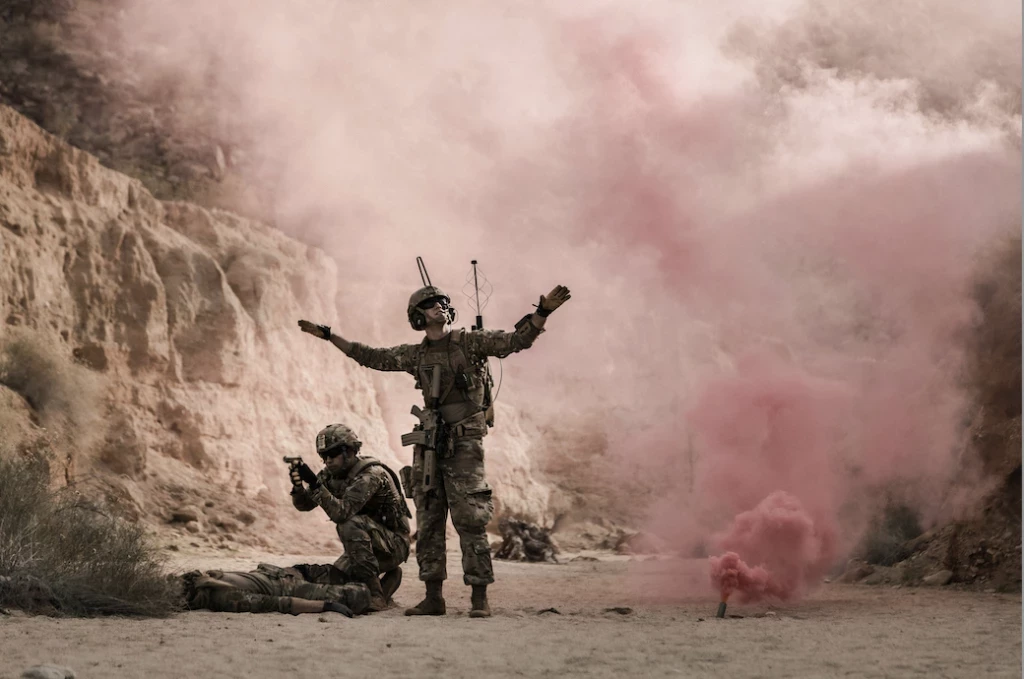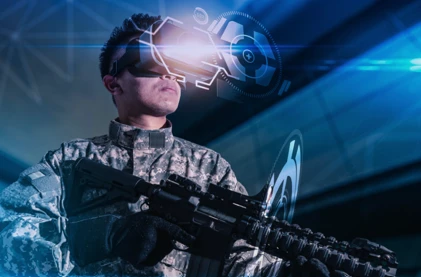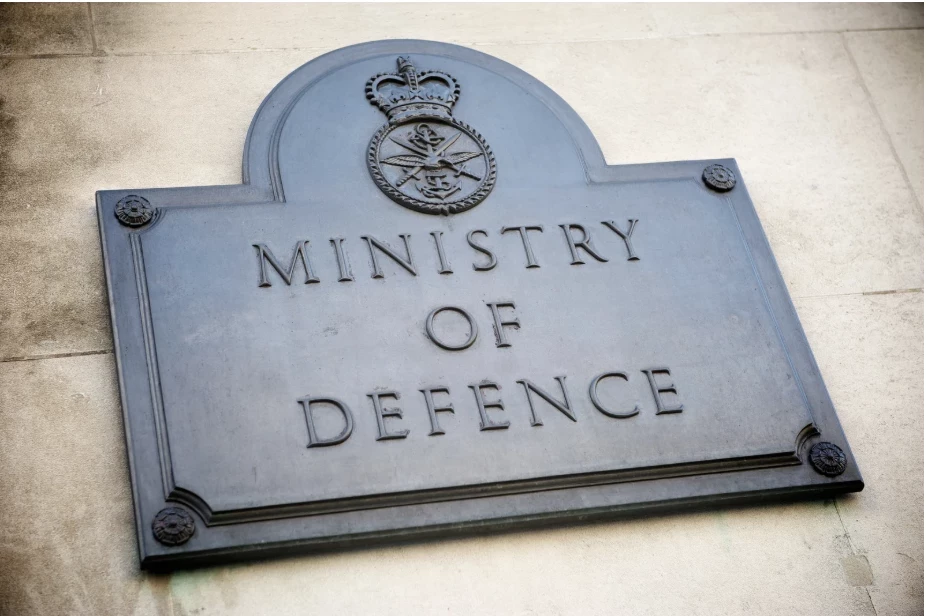The Internet of Battlefield Things (IoBT) and next generation sensors
With a fully integrated situational awareness sensor suite, formations will understand more and be more responsive than current formation capabilities
Add bookmarkNext generation sensor technology
Military operations are relying less on humans and more on interconnected technology for situational awareness and communication. A network of connected sensors utilising cloud technology embedded within biometric wearables, combat gear, and vehicles will provide soldiers with improved capabilities for identifying a neutralising the enemy.
The Internet of Battlefield Things (IoBT) is closer than we think, but there are still some technological and strategic hurdles to overcome, such as energy constraints and how to best ensure data gets to where it needs to be as soon as possible.
"In the land domain, there is a major issue with the bandwidth for data exchange"
A battle management system that will tell you where you are, where your allies are and the location of the enemy is vital in all combat domains. The one area where that capability is readily available is the air domain with active identification of friend or foe. In the land domain, the industry still has some way to go. There are more variables at play, and the difficulties in linking static ground sensors, soldier sensors, vehicle sensors, UAV sensors and robotic sensors is one of critical the technological larger hurdles to overcome.
In the land domain, there is a major bandwidth issue. Exchanging data requires dissemination of enormous amounts of data. The ultimate challenge is to minimise irrelevant data exchanges, ensuring that updates and developments stay relevant.
RECOMMENDED: Robotics and autonomy: The disruptive force for armoured vehicles
Connectivity and AI: increasing costs
In some respects, capabilities have progressed minimally in consideration of decades-old APCs such as the FV432 or M113, which are effectively an armoured box with a radio. Contemporary vehicles are similar in scope, but with added protection, sensors, and weapons.
In many current systems, when the dismounts emerge, they’re unsure where the threat is, and it is becoming a huge situational awareness issue, says Dr Robert Sadowski, Army Chief Roboticist, U.S. Army: "Now we can take some of that information and we let the crew assist. Regarding the dismounts, we have found that if you put dismounts in the back of the vehicle and provide them with a camera feed to the outside world, they can assess the threat environment before they emerge from the vehicle."
"When the dismounts emerge, they’re unsure where the threat is, and it is becoming a huge situational awareness issue"
High-fidelity camera technology is just the stepping stone. The next step is connecting feeds to the rest of the network which is an expensive consideration, says IHS Jane’s Analyst, Christopher Foss. "I think we’ve still got some way to go because a lot of new vehicles don’t even have an electronic architecture such as the original Boxer; it is, however, going to be added." Tactical intelligence does need to improve and it can come from a variety of sources.
- Movement detection sensors
- Unmanned vehicles
- Advanced cameras and thermal imaging
- Electronic warfare
Whether it comes from UAVs, humans, stay-be hinders, reconnaissance units, or electronic warfare, the biggest challenge is information management. Foss explains, information overload is highly likely in a fast-flowing operational environment and the great difficulty is in process information and passing it down the chain of command to ensure it gets to the right place.
In addition, connectivity has issues regarding security and the fact that satellites may not be available on tomorrow’s battlefield and communication is rarely 100% assured, especially in an urban environment. Problems can arise because of the diverse infrastructures that comprise megacities, which can ultimately muddy communication lines.
RECOMMENDED: How is armoured vehicle survivability changing?
Is robotics the answer to increased connectivity?
Major Wallace, Robotic Combat Vehicle Lead, Next Generation Combat Vehicle
Cross Functional Team said, "One challenge to consider is the tether for assured control. We know we’re going to have to be able to pipe data, but we also know it has to be anti-jamming and resilient in a denied environment.
We don’t know the data requirements yet for operating an unmanned vehicle, and we don’t know how far away they need to be. We know how far that we would like them to be, but we don’t know if it’s in the realm of the possible yet, because it’s a very intricate physics problem if you look at non-line of sight with vegetation, with distance and latency – these variables come in to play."
Ted Maciuba, Deputy Director, Mounted Requirements US Army Maneuver Center of Excellence tells us that connectivity is integral for strategic over-match. Foremost, the critical technology that nations should pursue is a network that enables assured communications and assured control of robotics platforms. “We need have to have the autonomy so we can reduce the workload because the systems can do things to provide distributed capabilities.”
A soldier system interface that takes the information through artificial intelligence and machine learning to strip out extraneous data can provide the soldiers with the information they need. One of the biggest challenges facing this concept is finding a solution capable of providing the power and energy for persistent robotics support. In consideration of contemporary vehicles, defensive aid systems, electronic architecture, air conditioning, NBC systems, weapons and are already using huge amounts of power.
"We need to have the autonomy so we can reduce the workload because the systems can do things to provide distributed capabilities.”
Robotics and connectivity will go a long way in pulling back the fog of war. Units with robotically enabled formations will be able to see more, understand more, and act significantly more effectively compared to current formation capabilities.
RECOMMENDED: Future trends in armoured vehicle lethality
However, will robotics and automation apply to environments that are not as data rich? Most industries focus on the analysis of offline data in contrast to a military environment where real-time analysis is the chief concern. Consumer products that utilise artificial intelligence, such as self-driving cars, can take advantage of a wealth of stored information to learn iteratively. Machine learning and artificial intelligence may have trouble with the difficult combat environments and terrain associated with insurgency conflict or terrain with fewer infrastructures to support the exchange of data.
It is imperative that IoBT solutions add value to personnel on the ground and not add to an already stressful situation with complex and confusing data. Any information that is transferred to a human at the end of the chain must be meaningful and manageable.
"The federated constellation of sensors working together to rapidly develop an enemy common operating picture. That is actually much closer than we think"
Maciuba says we can overcome this problem. Regarding commercial products, there is still a lot of information for defence centric technology to rely on. With a full spectrum network involving external information and intelligence systems, including information from mission command and higher headquarters, there is still a lot of data artificial intelligence can take and be relayed back to formations intuitively. The key to this system will be the network, the soldier system interface and power and energy supplies working in unison. A solution that can work in insurgency environments is one of the first considerations for future products.
RECOMMENDED: Armoured vehicle mobility: Strike brigades and future trends
The federated constellation of sensors working together to rapidly develop an enemy common operating picture. That is actually much closer than we think. However, there are some challenges we have to negotiate before we’re able to achieve the effects we want.






















